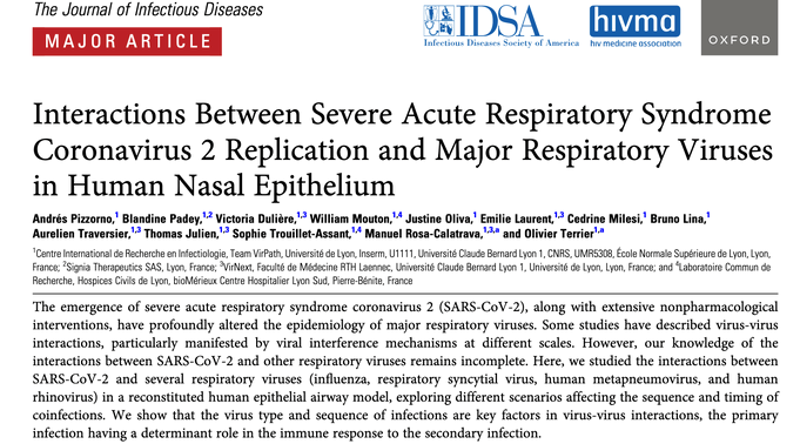The emergence of SARS-CoV-2 have profoundly altered the epidemiology of major seasonal respiratory viruses (influenza, respiratory syncytial virus, human metapneumovirus and human rhinovirus). In this study, we studied and compare the mutual interactions between these pathogens in reconstituted human epithelial airway models (MucilAir®) by exploring different infection and superinfection scenarios. Our results suggest that the virus type and sequence of infections, with the specific nature of the induced innate immune response, are key factors in virus-virus interaction and epithelium integrity.
In the current situation of cocirculation of seasonal respiratory viruses and SARS-CoV-2, it is essential to further continue our efforts to better understand their interactions in order to guide prophylactic and therapeutic treatments. From this point of view, the development of drug repurposing and host-targeted antiviral strategies with broad-spectrum efficacy could strengthen our arsenal to fight emergent and re-emergent respiratory viruses
This work from Virnext and VirPath laboratory was supported by INSERM Institut national de la santé et de la recherche médicale REACTing (Research & Action Emerging Infectious Diseases), CNRS – Centre national de la recherche scientifique, Région Auvergne-Rhône-Alpes, ANRT – Association Nationale de la Recherche et de la Technologie and Signia therapeutics INSTITUT MÉRIEUX (Mérieux Research Grant).


